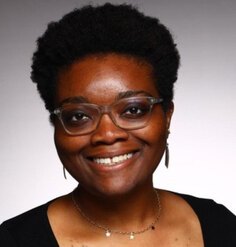5 Questions with Dan Herman
December 18, 2014
Dan Herman, ASLA co-founded Rabben/Herman design office in 2000. Over the last 20 years he has specialized in the leisure and entertainment industry having worked on themed visitor attractions, hotels and resorts, and mixed-use entertainment centers for all of the major entertainment companies, including Universal Studios, Paramount, Warner Bros., Disney, and Lego.
What are you drawing inspiration from right now?
I recently read the book Think Fast Think Slow by Daniel Kahneman, and it has had the most profound effect on my mindset about how I think through a project and for all phases of project implementation. In very simple terms, Kahneman illustrates how we use our “fast brain” which is instinctive and emotional to reach easy conclusions rather than use our slow brain, which is logical and deliberate. Our brain would prefer to not spend the effort to think through a problem carefully, analyze the data, and study multiple alternatives to identify the best answer. The book gives example after example how this happens in all phases of life, and it deeply affected how I have tried to not take the easy way out in identifying solutions to our clients’ problems, dealing with people, in selling our proposed solutions, and in my everyday life. With the background of the book, I can identify when I am slipping into the easy answer and force myself to really think through the problem. It is really an outstanding book that offers insights into everything we do.
What potential for sustainability most excites you on one of your current projects?
We are currently working on the master plan for a large project in Dubai, and the client insisted from day one that the design feature a significant size lagoon (62 acres at final build-out). Our client was not to be convinced otherwise, so the design team searched for ways to make the lagoon both the feature that the client desired and something that we could feel good about from a water use and sustainability standpoint.
We also knew from experience that other lagoons constructed in the region were not successful. They were expensive to maintain and operate and sometimes needed operational expertise that was not available. Many existing lagoons suffer from algae blooms, and some projects are eliminating constructed lagoons completely. We needed a solution that was as natural and self-maintaining as possible.
Our office worked closely with the Dubai-based, multi-disciplinary office of Halcrow and, through their parent company, we had the opportunity to work with the very talented environmental engineers of CH2MHill. David Austin of CH2MHill understood and embraced our goals immediately, and we worked together to develop concepts to create as sustainable a water body as we could achieve.
On this particular project, we had the opportunity to pipe seawater to the site rather than use groundwater and deplete the local aquifer. CH2mHill then proposed using a reverse osmosis (RO) treatment system that would allow the introduction of beneficial fish and plant life to keep the lagoon oxygenated and functioning as a natural system. To ensure that the lagoon’s water quality was good enough to avoid foul odors and control algae growth, the salinity at the discharge point must stay at approximately 40,000 mg/L total dissolved solids (TDS). Salinity management is the driver for supply cost. If water supply salinity is low, little volume of water is needed to continually flush excess salt out of the lagoon. If water supply salinity is high, then high volumes of water are needed to flush out excessive salinity. Data received to date indicated that groundwater salinity was low enough to enable discharge to evaporation ponds for Phase 1 of the project. In future phases, discharge volumes will increase to maintain salinity within acceptable limits, making evaporation ponds impractically large. The team proposed that we create saltwater wetlands as habitat areas for local migratory birds. David was familiar with the man-made salt-water wetlands at Al Wathba in Abu Dhabi and he used that as a model for ideas for our project. We proposed using these wetlands as open space areas for adjacent residential development.
In the design of the lagoon, we examined wind pattern and shade patterns to use design to try and reduce the amount of evaporation. We explored different plant materials that would help cleanse the water and contribute to the habitat opportunities that the salt-water wetlands would create.
What do you need to know, but you don’t know right now?
That is a pretty long list, as it seems like every day I need to know more than I do. The example of using water in the desert as a feature element presented more opportunities to learn than one could imagine. But what I would have really liked to know was how to convince my client that we could have developed a better option in the first place.
I’d also like to know more about the most current research, technologies, techniques and soils for planting in urban environments or on-structure conditions. Twenty-five years ago an on-structure project was unique; today it seems like every urban project has at least one roof garden or on-structure condition. For example, we recently completed a project in Las Vegas and the concept was to create a green oasis in a very urban environment. What is the best way to ensure that trees can not only survive but prosper and grow to their full size and life span?
Another problem that has challenged me for a long time: How to help clients that cannot read drawings provide meaningful insights and comments on the plans we prepare? Many clients contribute only superficial comments to our plans and then are disappointed when the project is built — only then do they realize that they had really important criteria that needed to be incorporated into the design. Or they “fast think” and chose the easy answer only to realize too late that they have chosen the wrong direction, and the results are less successful than they could have been.
What advice would you give to emerging leaders in the profession?
Great projects are based on great ideas. Search for great ideas, and don’t let the ease of digital graphics overwhelm the need for really unique ideas and solutions to problems. With today’s computing power and software, we can spend a relatively short time analyzing a problem and developing a solution, and then we can develop a really compelling presentation to share with and convince our clients. It seems to me that digital graphics can convince clients that everything is solved and resolved and that the proposed solution is really good, when in fact the presentation is really good but the ideas may not be.
What challenge would you give to emerging leaders in the profession?
Always think big, even on your smallest projects. I recently read an interview with a very distinguished landscape architect, and he seemed to dismiss small projects. I say, even small projects are important. A 10,000 sf playground in an underserved neighborhood is vital to provide physical activity for children and serve as a community focal point for social interaction. Maybe the planting design can provide a lesson in water conservation that residents can take home to their own gardens. Small transformations can make a very large difference, so think big. Whether you are designing a playground or community garden or whatever your challenge is, make sure you take two steps back to look at the big picture, to see all that this project can be and make sure that you do your part to make it successful.
The Rabben/Herman design office was founded in 2000 by William Rabben and Dan Herman. Both Principals had a desire to focus on design and to work with clients who appreciated the difference landscape could make to their projects, the people who used their projects and the communities those projects are located in. We maintain a small and dedicated staff, many of whom have been with the office almost since its opening. The firm works throughout the western U.S. and internationally in Europe, Asia, and the Middle East. Recent projects include the LINQ in Las Vegas, Marina Park in Newport Beach, CA and Dubai Parks and Resort in Dubai, U.A.E.
Any opinions expressed in this interview belong solely to the author. Their inclusion in this article does not reflect endorsement by LAF.











